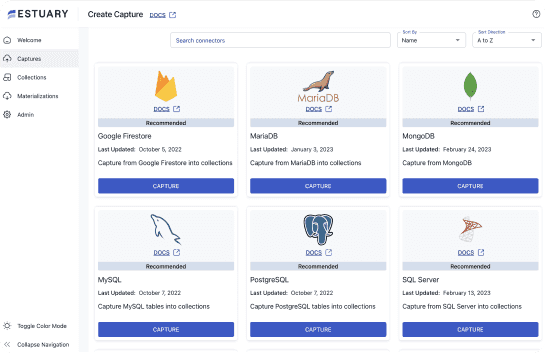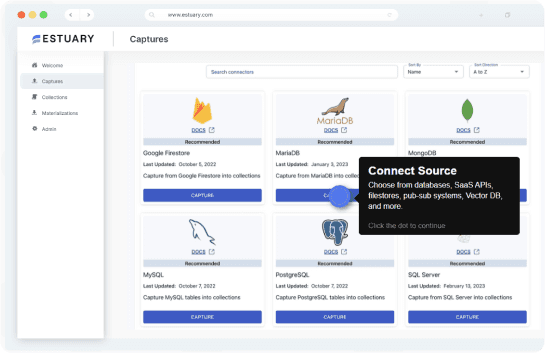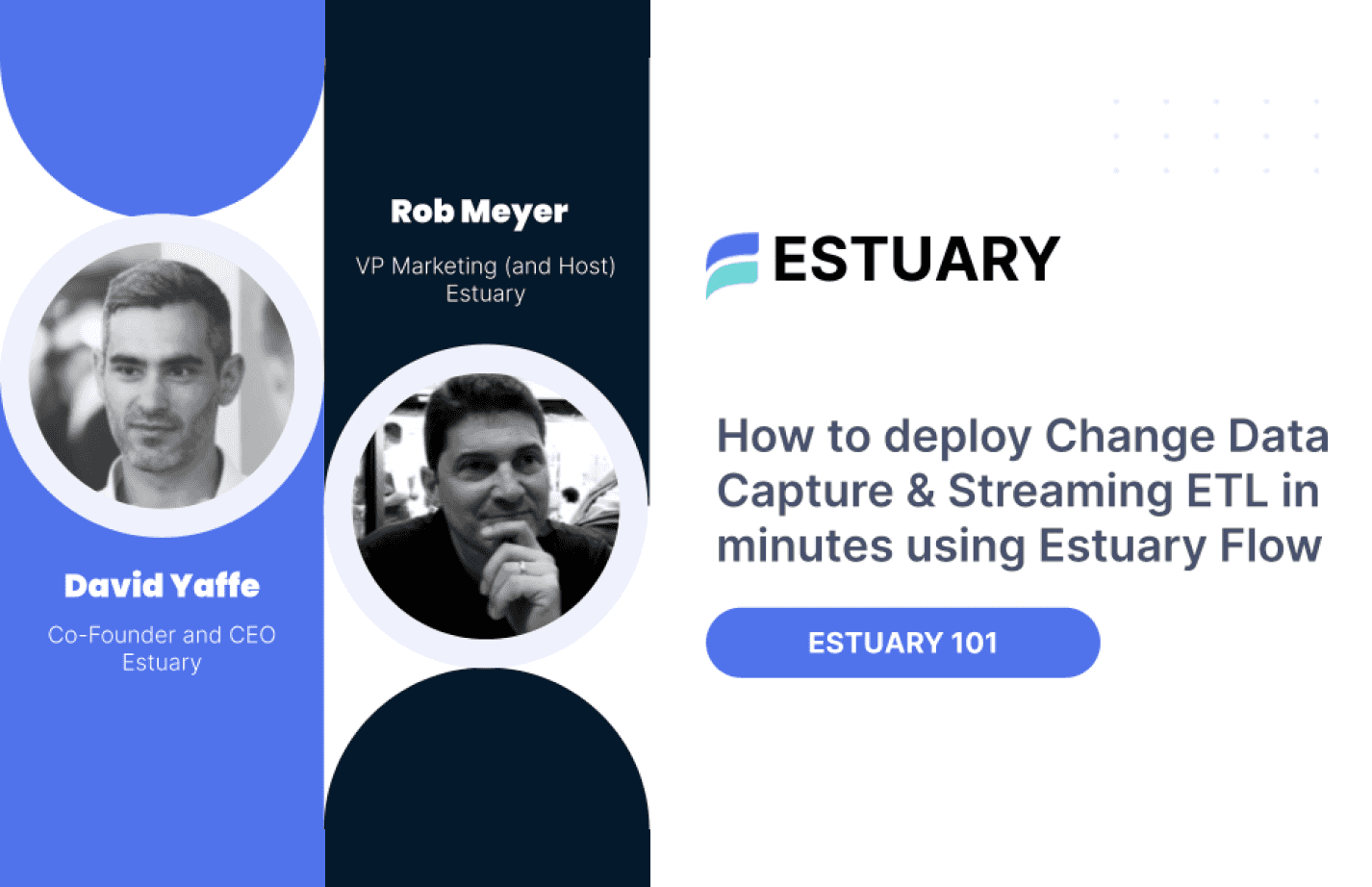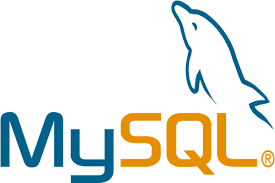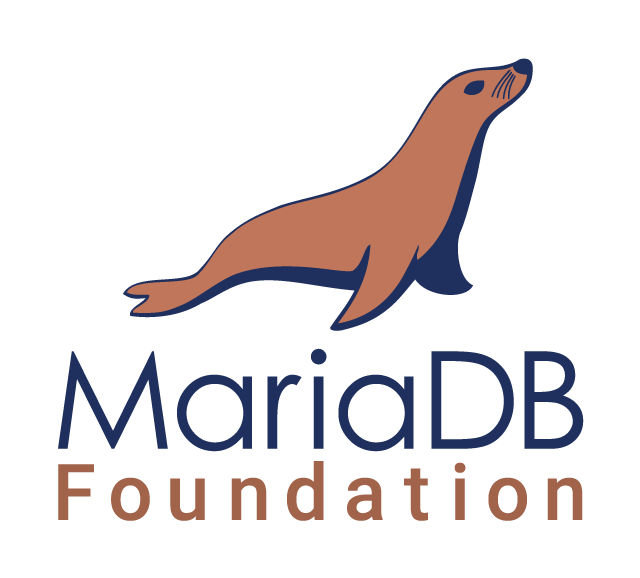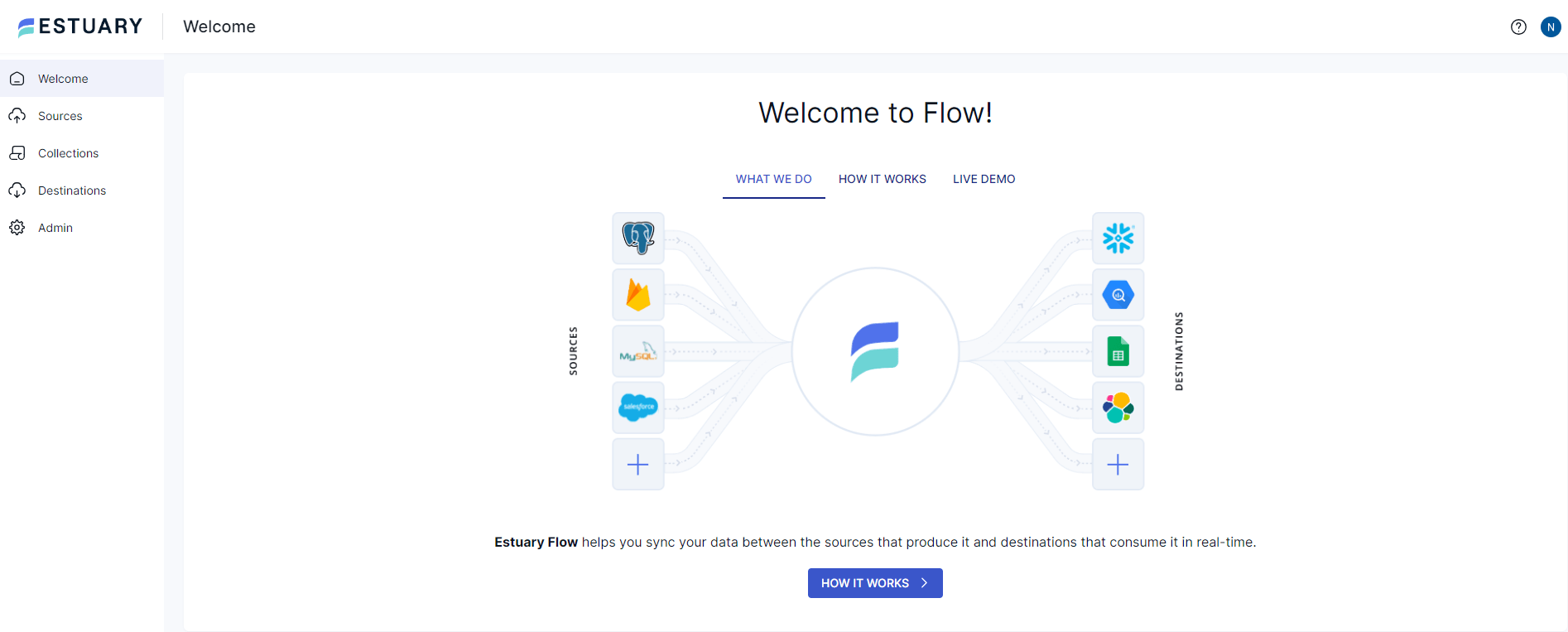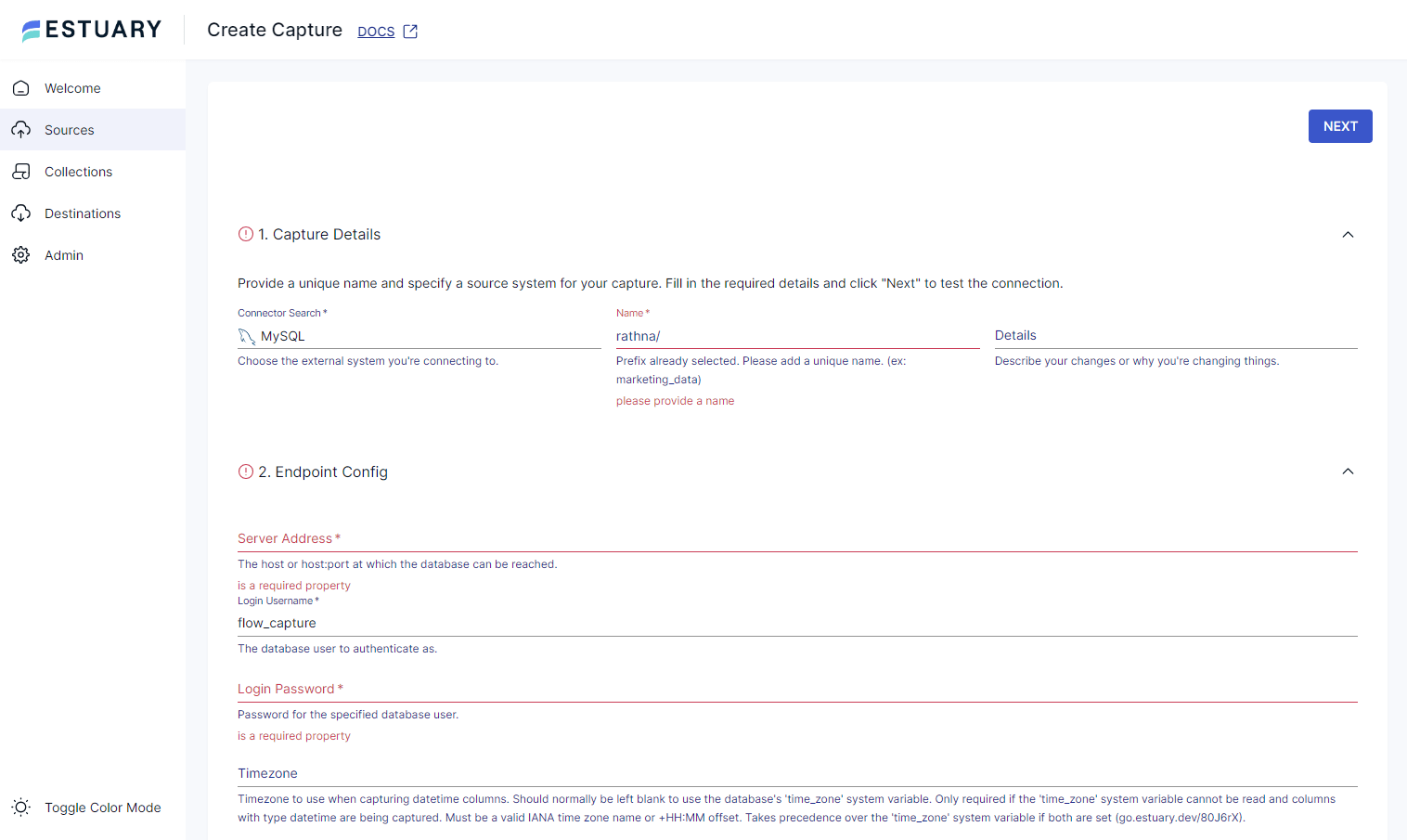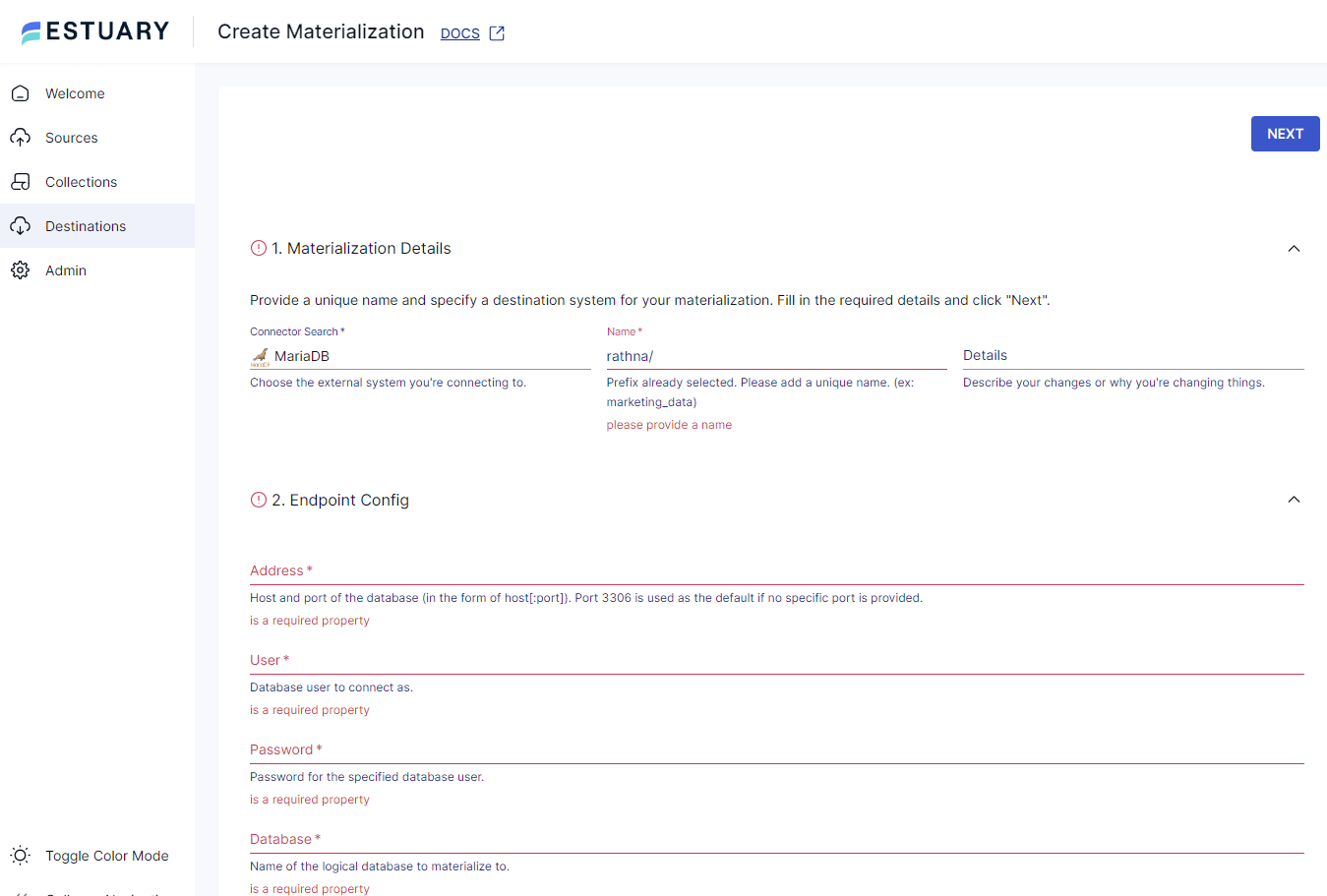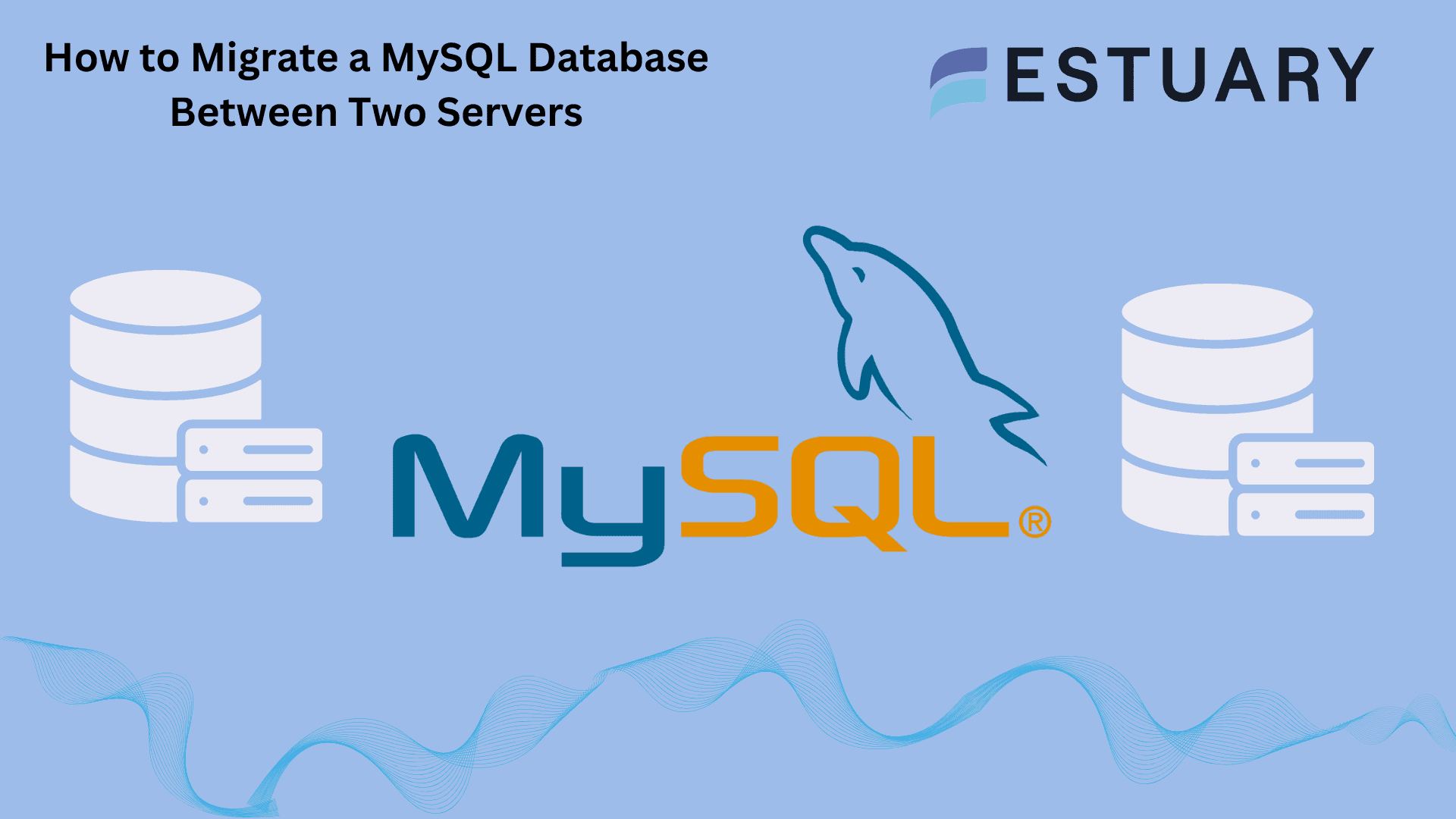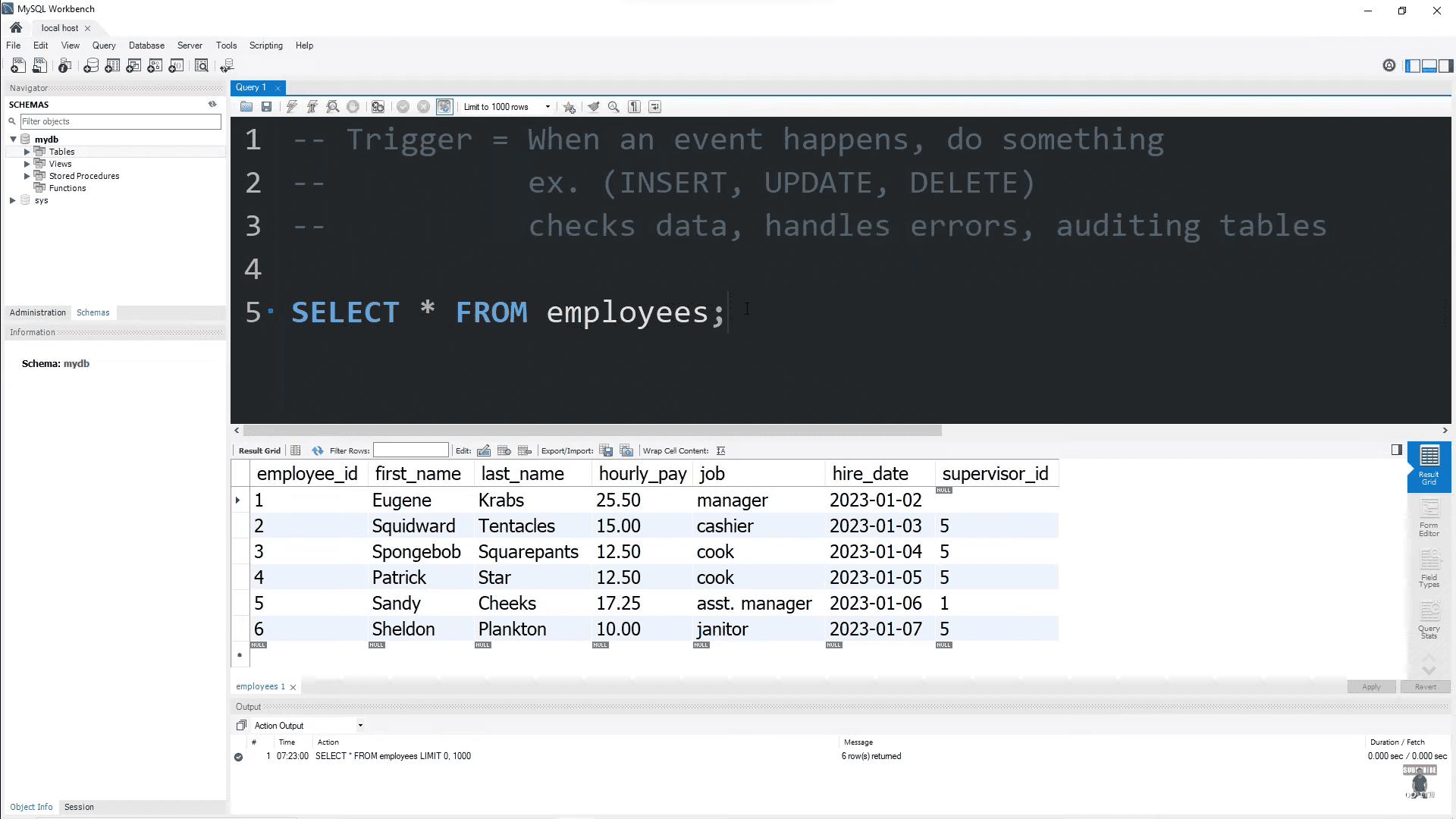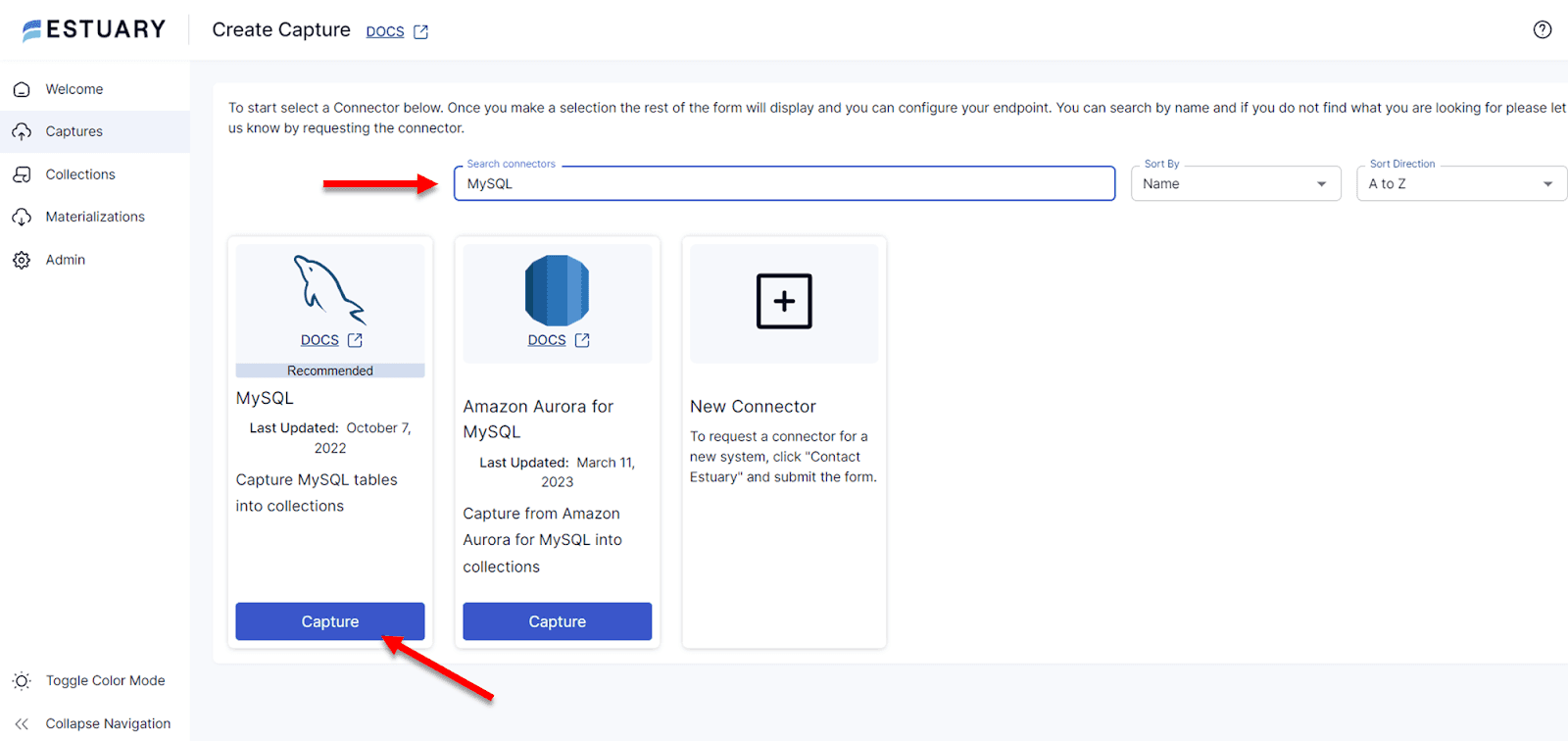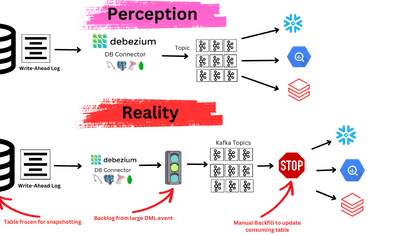
Introduction: Why Migrate from MySQL to MariaDB?
If you're running applications on MySQL and looking for better performance, open-source freedom, or enhanced clustering, migrating to MariaDB might be the upgrade your infrastructure needs.
Originally forked from MySQL by its original developers, MariaDB is a drop-in replacement designed for speed, scalability, and long-term community support. It offers improved features such as native clustering (via Galera), support for external plugins, and more transparent development practices — all while maintaining high compatibility with MySQL.
For teams seeking:
- Better performance on complex queries
- Improved high-availability and fault tolerance
- Modern database features with a familiar SQL interface
...MariaDB is a compelling choice.
In this guide, we’ll compare the two databases and walk you through two proven methods to move data from MySQL to MariaDB:
- A real-time, no-code approach using Estuary Flow
- A manual migration using CSV exports and imports via the command line
Whether you're planning a one-time migration or setting up continuous replication, you'll find the best-fit method here.
Need to migrate the other way around? Check out our MariaDB to MySQL migration guide.
MySQL vs MariaDB: What’s the Difference?
Though they share a common origin, MySQL and MariaDB have evolved into distinct database systems, each with its own strengths and use cases.
What is MySQL?
MySQL is one of the most widely used open-source relational database management systems (RDBMS), known for its simplicity, performance, and compatibility with many platforms and frameworks. Backed by Oracle, MySQL powers web-scale applications like Facebook, Netflix, and Shopify.
Key Features:
- Replication support: Asynchronous, semi-sync, or group replication for scalability
- Client/server architecture: Multithreaded engine with client libraries and APIs
- Widely supported: Compatible with most programming languages and platforms
- Default storage engine: InnoDB, optimized for transactional performance
Ideal for: web apps, reporting tools, and OLTP systems requiring stable, mature SQL support
What is MariaDB?
MariaDB was created by the original MySQL developers in response to Oracle’s acquisition of MySQL. It's fully open-source and community-driven, designed to remain free and transparent while offering significant feature upgrades.
Used by major enterprises like Walmart, Alibaba Travel, and Accenture, MariaDB brings enhanced performance, extensibility, and high availability.
Key Features:
- Galera Cluster: Built-in multi-master clustering for zero-downtime replication
- Pluggable architecture: Support for external plugins like ColumnStore, Spider, and TokuDB
- Improved JSON and virtual columns: More flexible than MySQL’s JSON functions
- Faster release cycles: Rapid development with open roadmap
Ideal for: teams needing advanced features, scale-out clustering, and long-term open-source support
Comparison Table: MySQL vs MariaDB
Feature | MySQL | MariaDB |
| Developer Stewardship | Oracle | Original MySQL team (MariaDB Corp.) |
| License | Open-source + proprietary | 100% open-source (GPLv2) |
| Default Storage Engine | InnoDB | Aria (default), InnoDB, ColumnStore |
| Clustering | Group Replication (optional) | Built-in Galera Cluster |
| Release Cycle | Slower, Oracle-controlled | Fast, community-driven |
| Compatibility | High (with MariaDB 10.x) | High (drop-in MySQL replacement) |
Next up: we’ll dive into two methods for migrating data from MySQL to MariaDB — one manual, and one using Estuary Flow for real-time syncing.
2 Methods to Migrate Data from MySQL to MariaDB
In this section, we’ll explore two well-known step-by-step methods to migrate data from MySQL to MariaDB:
- Method 1: Using Estuary Flow to connect MySQL to MariaDB
- Method 2: Manually migrating data from MySQL to MariaDB
Method 1: Migrate MySQL to MariaDB Using Estuary Flow (No-Code, Real-Time)
If you’re looking for a fast, reliable, and real-time way to migrate data from MySQL to MariaDB — with no manual file exports or downtime — Estuary Flow is your best option.
Estuary Flow is a modern, no-code data integration platform that enables:
- Real-time data syncing via Change Data Capture (CDC)
- A visual pipeline builder
- Over 150+ prebuilt connectors for databases, APIs, files, and cloud apps
- Built-in schema evolution handling and streaming reliability
- Secure deployment options including Bring Your Own Cloud (BYOC) or private cloud hosting, ensuring full control over infrastructure, compliance, and data residency
It’s perfect for ongoing replication, enterprise workloads, large datasets, and latency-sensitive use cases.
Prerequisites
Before you begin, ensure you have:
- A running MySQL database (source)
- A MariaDB instance (destination)
- An Estuary Flow account (free to start)
Step 1: Connect to MySQL as a Source
- Log in to Estuary Flow or sign up for a new account.
- On the Estuary Flow dashboard, click Sources in the left-side pane.
- On the Sources page, click the + NEW CAPTURE button on the top left.
- Type MySQL in the Search connectors box and click the Capture button at the bottom of the connector.
- On the Create Capture page, enter the details like Name, Server Address, Login Username, and Login Password.
- Click NEXT > SAVE and PUBLISH to finish setting up your source.
Flow will automatically detect tables and begin capturing changes using log-based CDC, ensuring efficient and accurate data extraction, even as records are updated.
Step 2: Connect to MariaDB as the Destination
- To configure the destination end of your data pipeline, click Destinations on the left-side pane of the dashboard.
- Click the + NEW MATERIALIZATION button on the Destinations page.
- Type MariaDB in the Search connectors box and click the Materialization button at the bottom of the connector box.
- On the Create Materialization page, enter the details like Address, User, Password, and Database.
- Scroll down and find Source Collections. If your collections weren’t filled in automatically, you can add them manually using the Link Capture button.
- Click NEXT > SAVE and PUBLISH to finish setting up your Destination.
Once this is set up, Estuary Flow will stream your MySQL data to MariaDB in real-time, with automatic retries, monitoring, and schema validation.
You can also connect multiple sources to a single MariaDB destination, or route data to multiple destinations (e.g., MariaDB + data warehouse) simultaneously with Flow’s streaming architecture.
Method 2: Manually Migrating Data from MySQL to MariaDB Using CSV
If you're working with a small dataset or need to perform a simple, one-time migration, manual CSV-based migration is a practical option. This approach involves exporting data from MySQL to CSV file and then importing it into MariaDB using SQL commands or database tools.
While this method doesn’t support real-time updates or schema changes, it offers basic portability for users comfortable with command-line operations.
Prerequisites
- Access to a MySQL database
- A running MariaDB instance
- Basic knowledge of SQL commands or a database GUI (e.g., phpMyAdmin or MySQL Workbench)
Step 1: Export Data from MySQL to CSV
There are multiple ways to extract data from MySQL:
Option A: Using mysqldump
plaintextmysqldump -u root -p --tab=/path/to/export/ your_database_nameThis will generate .sql and .txt files that can be used for import.
Option B: Using SELECT INTO OUTFILE
plaintextSELECT * FROM your_table
INTO OUTFILE '/path/to/your/file.csv'
FIELDS TERMINATED BY ','
ENCLOSED BY '"'
LINES TERMINATED BY '\n';Other export tools you can use:
- phpMyAdmin: GUI-based export to CSV or SQL
- MySQL Workbench: Built-in data export wizard
- CSV Engine (advanced): MySQL supports writing directly to CSV via special storage engines
Step 2: Import CSV into MariaDB
Once the CSV is ready, import it into MariaDB using the terminal:
- Log in to MariaDB:
plaintextmysql -u root -p- Switch to the target database:
plaintextUSE your_database_name;- Enable local file import (if disabled):
plaintextSET GLOBAL local_infile=1;- Run the import command:
plaintextLOAD DATA LOCAL INFILE '/path/to/your/file.csv'
INTO TABLE your_table
FIELDS TERMINATED BY ','
ENCLOSED BY '"'
LINES TERMINATED BY '\n'
IGNORE 1 ROWS;- Disable local file import (recommended for security):
plaintextSET GLOBAL local_infile=0;Limitations of Manual Migration
Some of the drawbacks of manually replicating data from MySQL to MariaDB are:
- Time and Effort Intensive: Manually migrating data involves exporting CSV files from MySQL and importing them to MariaDB. This process can be significantly time-consuming as it involves constant updating of CSV files for each MySQL table, leading to repetitive tasks and increased effort.
- Technical Expertise: The success of data migration mainly depends on the skill level of individuals performing the migration task, as it requires an in-depth knowledge of both databases. Any coding mistakes may lead to data loss and performance problems.
- Prone to Errors: Migrating data from MySQL to MariaDB can cause errors, especially for large datasets during data extraction, transformation, and loading. This may happen due to incompatible data types, differences in syntax, encoding variations, and inaccurate mapping.
When to Use This Method
- Small or static datasets
- Simple migrations without change tracking
- One-off database migrations for staging or testing
- Teams with strong SQL expertise but no ETL tools
For anything beyond this, it’s recommended to use a robust pipeline tool like Estuary Flow to avoid rework, latency, and data loss.
Key Takeaways
Migrating from MySQL to MariaDB can be a smart move, especially if you want a more extensible, performance-oriented, and truly open-source relational database system.
Here's what you should remember:
- MySQL and MariaDB are highly compatible, but differ in clustering, plugin support, and development philosophy.
- You can migrate data in two main ways:
- A manual method using CSV exports/imports (suitable for small, one-off jobs)
- An automated, real-time method using Estuary Flow (ideal for scalable, production-ready pipelines)
- Manual migration can be tedious, error-prone, and lacks update tracking or automation.
- Estuary Flow offers real-time CDC, schema evolution handling, and no-code setup, while supporting enterprise security and BYOC deployment.
Choose Estuary Flow if you're handling dynamic, high-volume, or mission-critical data. It's built to simplify complex migrations — and keep your systems in sync without lifting a finger.
FAQs
What is the best tool to move data from MySQL to MariaDB?
Does Estuary Flow support real-time sync between MySQL and MariaDB?

About the author
With over 15 years in data engineering, a seasoned expert in driving growth for early-stage data companies, focusing on strategies that attract customers and users. Extensive writing provides insights to help companies scale efficiently and effectively in an evolving data landscape.

